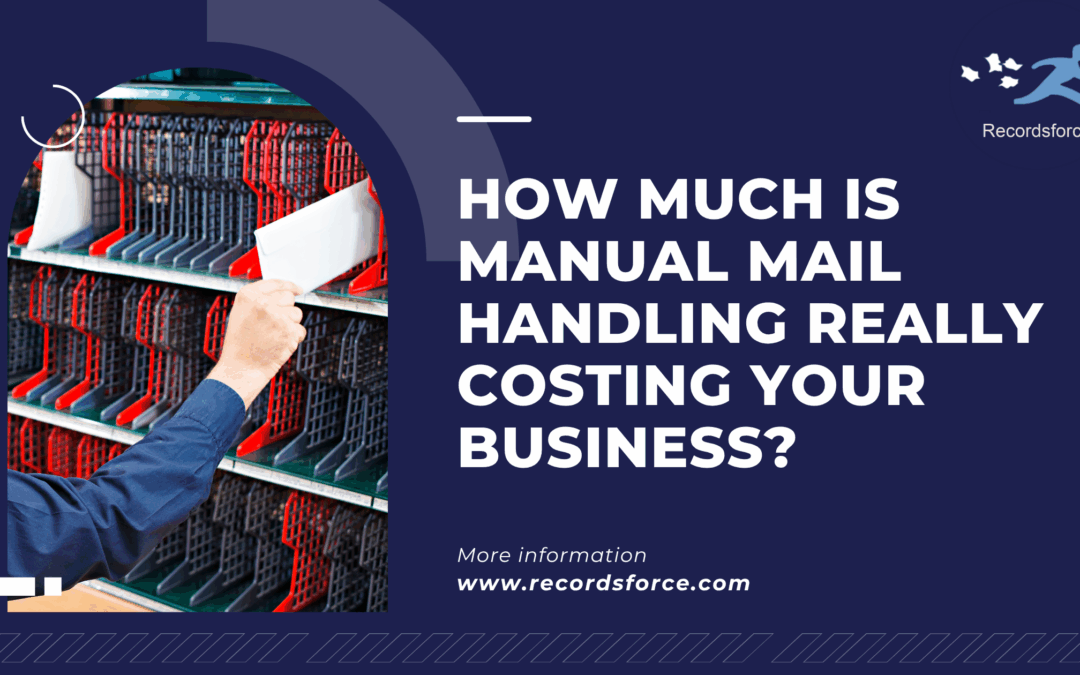At first glance, handling incoming and outgoing mail manually may not seem like a significant expense. It’s just mail, right? A few minutes here, a few envelopes there. But when you start to look at the cumulative impact of a manual mail process across an entire organization, especially one dealing with high volumes, you’ll start to see just how costly it really is.
From labor and postage to delays, errors, and missed opportunities, manual mail handling quietly drains time, money, and productivity. In this post, we break down the real costs and hidden risks of traditional mailrooms and how switching to a digital mailroom can dramatically improve your bottom line.
The Direct Costs of Manual Mail Handling
Labor
One of the largest expenses is people. Manual mail handling typically involves:
- Sorting incoming mail by department or recipient
- Physically delivering mail to desks or internal mail stops
- Opening envelopes, removing staples, and preparing documents for scanning or filing
- Printing, folding, stuffing, and labeling outgoing mail
Depending on mail volume, this could require multiple full-time employees, or more time than you realize from existing staff.
Example: If one employee spends just 2 hours per day handling mail at $25/hour, that’s over $13,000 per year and that’s just one person.
2. Supplies & Equipment
Manual processes require:
- Scanners or copiers for duplicating documents
- Data entry labor to log and route mail
- Mail openers and sorters
- Folders, trays, and filing cabinets for organization
- Labels, paper clips, and staples for document handling
- Storage space for physical records and backup copies
These costs add up quickly, especially with the time and materials wasted on sorting, logging, and filing paper mail manually.
The Indirect Costs of Manual Mail Handling
1. Slow Delivery and Response Times
Mail takes time to route manually. If critical invoices, contracts, or compliance documents sit on someone’s desk, or in a misplaced envelope, your operations grind to a halt.
- Delayed approvals
- Missed deadlines
- Payment delays
- Lost business
2. Errors and Lost Documents
Manual sorting and handling increase the risk of:
- Misrouted documents
- Human error in distribution
- Misplaced or lost mail
- Sensitive information falling into the wrong hands
These issues are not just inconvenient, they can result in compliance violations or lawsuits.
3. Inefficiency in Hybrid Work Environments
In a remote or hybrid workplace, routing physical mail to off-site employees becomes even more difficult and time-consuming. Employees may be forced to come into the office just to retrieve important documents, or critical mail may sit unopened for days.
The Opportunity Cost
Every minute an employee spends manually handling mail is a minute they’re not doing high-value work. You’re not just paying for mail handling, you’re paying in lost productivity.
- Your accounts payable team could be focusing on reconciliation and cash flow
- HR staff could be onboarding new talent
- Your customer service team could be resolving issues faster
Instead, they’re stuck shuffling paper.
What a Digital Mailroom Saves You
By digitizing your incoming mail processes, a digital mailroom automates the flow of information so it’s:
- Opened, scanned, and routed automatically
- Delivered instantly to the right person or system
- Indexed, tracked, and auditable for compliance
Businesses that switch to digital mailrooms often see:
- 80–90% faster mail processing times
- 30–60% reduction in labor costs
- Improved accuracy and compliance
- Happier, more productive employees
Manual mail handling may seem like a routine cost of doing business but the truth is, it’s an outdated process that comes with high financial and operational risks. In a world where speed, security, and efficiency matter more than ever, it’s time to ask: How much is your mailroom really costing you?
If you’re ready to cut costs, improve efficiency, and future-proof your operations, Recordsforce can help. Our digital mailroom solutions are scalable, secure, and built for modern businesses.

